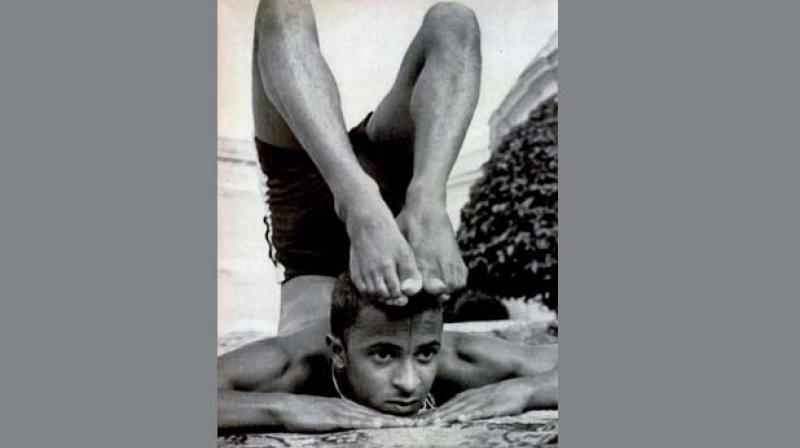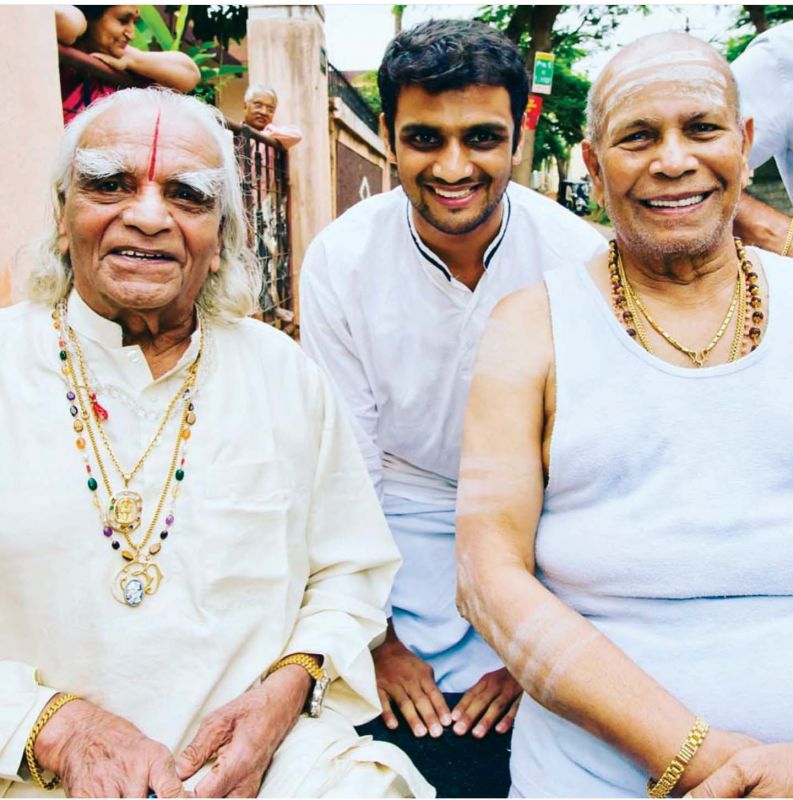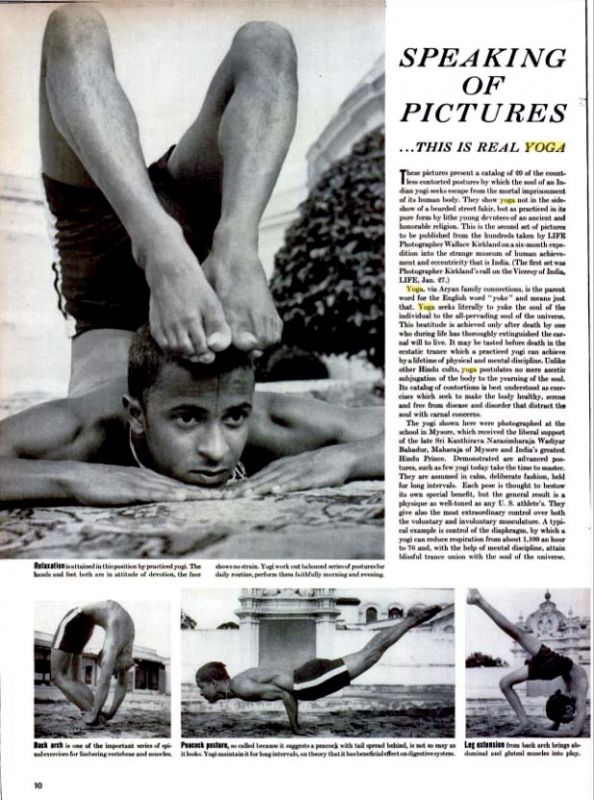When Life came in search of a Yogi

Bengaluru: It was the year 1941. Wallace Kirkland, a photographer for Life Magazine, had embarked on a six-month expedition into "the strange museum of human achievement and eccentricity that is India," according to the magazine's February 1941 issue. Here, he found Tirumalai Krishnamacharya, the renowned yoga exponent credited with the revival of hatha yoga, teaching at a shala in Jaganmohan Palace, Mysuru.
Intrigued beyond measure, Kirkland took a series of photographs of Krishnamacharya's students, among them, Pattabhi Jois, pioneer of Ashtanga Yoga and the founder of the Pattabhi Jois Ashtanga Yoga Institute in Mysuru. The story spread like wildfire. "Before they knew it, people were flocking to the shala from all over the world," said Sharath, Jois' grandson and current director of the institute, speaking to DC ahead of International Yoga Day.
 B.K.S. Iyengar with Sharath Jois (centre) and K. Pattabhi Jois (courtesy Instagram) and (right) Life Magazine, Feb, 1941
B.K.S. Iyengar with Sharath Jois (centre) and K. Pattabhi Jois (courtesy Instagram) and (right) Life Magazine, Feb, 1941
Until that point, yoga had remained confined to a few devout teachers and practitioners, its pre-Vedic traditions and philosophy largely intact. For Pattabhi Jois, yoga was an instant calling. The son of an astrologer, Jois learned Sanksrit and Hindu rituals at a very young age, although he knew little about yoga. “He was 12 years old when he met Krishnamacharya for the first time. He went up to him immediately and asked if he could be his student,” said Sharath, a tech-savvy (I’m on Instagram”), well-travelled, and thoroughly global modern day yogi. “He would travel to Hassan everyday for his practice.”
Krishnamacharya left Hasan soon after and Jois ran away to study Sanskrit at the Sanskrit College in Mysuru, armed with a princely Rs 2, in the year 1930.
The then Maharaja of Mysuru, Krishna Rajendra Wodeyar, invited Krishnamacharya to the city to teach yoga, even setting up a shala for him at the Jaganmohan Palace. "My grandfather finally became reunited with his guruji," said Sharath.
Coincidentally, the other icon in the yoga pantheon, B.K.S. Iyengar, the founder of Iyengar yoga, was also Krishnamacharya's student at the time. “Finding students was very difficult at the start, before the story in Life magazine. My grandfather would go from house to house and across the Sanskrit College campus, asking people to join his class,” Sharath recalled, laughing out loud in acknowledgement of just how much times have changed. “We set up our shala in Lakshmipuram and moved to Gokhulam because we needed a bigger space. We’re running out of space again!”
The two star pupils – B.K.S. Iyengar and Pattabhi Jois – went their separate ways, the former founded the Iyengar school, while Jois rooted himself in the Patanjali Sutra. “Ashtanga Yoga involves a Vinyasa flow – the breath is all-important,” Sharath explained, for several offshoots like Power Yoga, have evolved from the Ashtanga style. “Several of the newer styles don’t pay attention to the breath, reducing yoga to a physical exercise, like aerobics.” Does yoga, as a tradition, not make room for evolution, then? “Of course it evolves, but this is the essence of it. Doing asanas might strengthen your body, but yoga is more than that.”
Sharath trained with his grandfather for 20 years, beginning in his late teens. “I was around 19 at the time – I would wake up at 3 am and ride my bike to my grandfather’s house, through the empty streets, when all my friends were asleep!” His practice, he said, started out with a lot of emphasis on the physical aspects of yoga – “I think I’m the only student to have learned all the asanas! I don’t know how I found the discipline at that young age – six months into the practice and something within me changed.”
Training under a guru, he says, is of the essence. “Teaching yoga involves doing sadhana for at least five years. There is no other way. Yoga is not a mere physical practice, it is a union of the body, mind and soul, with the breath at its heart. Theory needs to be taught as well, alongside the actual practice. Learning yoga is like mainstream education – you don’t start at college right away.”
Enlightenment is the only goal
Yoga is, in today’s volatile political setting, often confused with a Hindutva ideology. “There is no link between yoga and religion,” he said. “Yoga is for mankind and enlightenment, or moksha, is the ultimate goal and that is not bound by religion. Jesus was a yogi, too. The practice involves constant mindfulness and the full benefits of yoga need to go hand-in-hand with a disciplined life."


